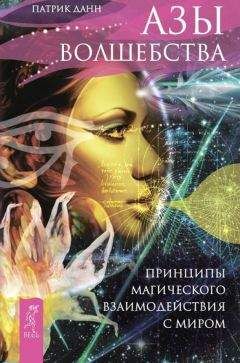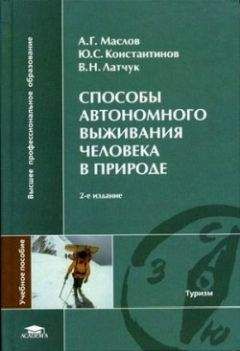Патрик Данн - Азы волшебства. Принципы магического взаимодействия с миром

Помощь проекту
Азы волшебства. Принципы магического взаимодействия с миром читать книгу онлайн
Цируф – форма каббалистического анализа, в которой буквы заменяются в соответствии с определенной системой, образуя новые слова.
Эвокация – магическое действо, в ходе которого маг вызывает духа или вступает с ним в контакт, удерживая его за пределами своего «Я».
Эффект отчуждения (Verfremdungseffekt) – достигается, когда с помощью художественных или иных средств что-то знакомое делается незнакомым.
1 Традиционно аллитерация понимается шире – как выразительный прием художественной речи, выражающийся в повторе определенных согласных (не обязательно начальных). – Примеч. ред.
Библиография
The American Heritage Dictionary of the English Language. Boston: Houghton Mifflin, 2000. Index of Semitic Roots.
Artisson, Robin. The Witching Way of the Hollow Hill: The Gramarye of the Folk Who Dwell Below the Mound. [No location]: Veritas Numquam Perit, 2006.
Austin, J. L. How to DoThings with Words. Second Edition. Cambridge, MA: Harvard University Press, 2005.
Barrett, Francis. The Magus: A Complete System of Occult Philisophy. York Beach, ME: Samuel Weiser, 2000.
Barry, Kieren. The Greek Qabalah: Alphabetic Mysticism and Numerology in the Ancient World. York Beach, ME: Samuel Weiser, 1999.
Beck, Judith. Cognitive Therapy: Basics and Beyond. New York: Gilford Press, 1995.
Brenstein, Henrietta. Cabalah Primer. Marina del Rey, CA: De Vorss, 1984.
Betz, Hans Dieter. The Greek Magical Papyri in Translation. Chicago: University of Chicago Press, 1997.
Bloomfeld, Maurice, trans. Hymns of the Atharva Vede. Sacred Books of the East, Vol. 42. Oxford: Oxford University Press, 1897. Online at http://www.sacred-texts.com/hin/sbe42/av140.htm (accessed 4 November 2007).
Buber, Martin. I and Thou. Walter Kaufmann, trans. New York: Simon & Schuster, 1970.
Burkert, Walter. Greek Religion. John Raffan, trans. Cambridge, MA: Harvard University Press, 1985.
Buzan, Tony. The Mind Map Book: How to User Radiant Thinking to Maximize Your Brain’s Untapped Potential. New York: Pulme, 1996.
Campbell, Joseph. The Hero with a Thousand Faces. Princeton, NJ: Princeton University Press, 1972.
Carmichael, Alexender. Carmina Gadelica: Hymns and Incantations Collected in the Higblands and Islands of Scotlands in the Last Century. Edibburgh, UK: Floris, 1992.
Carrol, Peter J. Liber Kaos. York Beach, ME: Samuel Weiser, 1992.
Carrol, Peter J. Liber Null & Psychonaut. York Beach, ME: Samuel Weiser, 1991.
Catford, J. C. A Practical Introduction to Phonetics. Oxford: Claredon Press, 1998.
Christenson, Larry. Answering Your Questions About Speaking in Tongues. Minneapolis: Bethany House, 2005 [1968].
Coward, Harold G., and David J. Goa. Mantra: Hearing the Divine in India and America. New York: Columbia University Press, 2004.
Crane, Hart. A Letter to Harriet Monroe. O May Land, My Friends: The Selected Letters of Hart Crane. Langdon Hammer and Brom Weber, eds. New York: Four Walls Eight Windows, 1997.
Crowley, Aleister. 777 & Other Qabalistic Writings. York Beach, ME: Weiser, 1986.
Crowley, Aleister. Liber Samekh: Theurgia Goetia Summa Congressus Cum Daemone. In Magick: Liber Aba: Book 4. Boston: Weiser, 1998. Online at http://www.hermetic.com/crowley/libers/lib800.html (accessed 22 April 2008).
Crowley, Aleister. Magick Without Tears. Scottsdale, AZ: New Falcon, 1991.
Derrida, Jacques. On Grammatology. Garatri Chakravorty Spivak, trans. Baltimore: Johns Hoplins University Press, 1976.
Dukes, Ramsey. S. S. O. T. B. M. E. Revised: An Essay on Magic. London: The Mouse That Spins, 2002 (third revised edition).
Dunn, Patrick. Postmodern Magic: The Art of Magic in the Information Age. Woodbury, MN: Llewellyn, 2005.
DuQuette, Lon Milo. The Magick of Aleister Crowley: A Handbook of the Rituals of Thelema. Boston: Weiser, 2003.
Easwaran, Eknath. Meditation: A Simple Eight-Point Program for Translating Spiritual Ideals into Daily Life. Tomales, CA: Nilgiri Press, 1991.
Easwaran, Eknath, trans. The Upanishands. Tomales, CA: Nilgiri Press, 1987.
Ellis, Albert. Handbook of Rational-Emotive Therapy. New York: Springer Publishing, 1977.
Erkes, Immanuel. The Gaon of Vilna: The Man and His Image. Jeffrey M. Green, trans. Berkeley, CA: University of California Press, 2002.
Frater U.·. D.·. Practical Sigil Magic: Creating Personal Symbols for Success. St. Paul, MN: Llewellyn, 1990.
Fries, Jan. Visual Magic: A Manual of Freestyle Shamanism. Oxford, UK: Mandrake, 1992.
Glossolalia in Contemoporary Linguistic Study. Metareligion. http://www.meta-religion.com/Linguistics/Glossolalia/contemporary_linguistic_study.htm (accessed 22 April 2008).
Goddard, Dwight, and Henri Borel, trans. Tao Te Ching. Whitefish, MT: Kessinger, 1919. Online at http://www.sacred-texts.com/tao/ltw/index.htm (accessed 16 May 2008).
Godwin, David. Godwin’s Cabalistic Encyclopedia: A Complete Guide to Cabalistic Magick. St. Paul, MN: Llewellyn, 1989.
Godwin, David. Light in Extension: Greek Magic from Homer to Modern Times. St. Paul, MN: Llewellyn, 1992.
Grasso, Stephen. Beneath the Pavement, the Beast. In Generation Hex. Jason Louv, ed. New York: Disinformation, 2006.
Griffith, F. Ll., and Herbert Thompson. The Demotic Magical Papyrus of London and Leiden. New York: Dover, 1974 [1904]. Online at http://www.sacred-texts.com/egy/dmp/dmp19.htm (accessed 22 April 2008).
Hafele, J. C., and R. E. Keating. Around-the-World Atomic Clocks: Predicted Reativistic Time Gains. Science 177 (1972).
Hale-Evans, Ron. Mind Performance Hacks: Tips & Tools for Overclocking Your Brain. Sebastopol, CA: O’Reilly, 2006.
Harner, Michael. The Way of the Shaman. San Francisco: Harper, 1990.
Hayakawa, S. I. Language in Thought and Action. New York: Harcourt Brace, 1990 [1939].
Hoffman, John George. Pow-Wows; or, Long Lost Friend. [No location: self-published], 1820. Online at http://www.sacred-texts.com/ame/pow/index.htm (accessed 22 April 2008).
James, William. The Varieties of Religious Experiences. New York: Modern Library, 1999 (1902).
Jarrett, R. H. It Works. Camarillo, CA: DeVorss & Company, 1976.
Klauser, Henriette Anne. Write In Down, Make It Happen: Knowing What You Want – and Getting It! New York: Fireside, 2000.
Korzybski, Alfred. Science and Sanity: An Introduction to Non-Aristotelian Systems and General Semantics. Fort Worth, TX: Institute of General Semantics, 1995.
Kraig, Donald Michael. Modern Magic: Eleven Lessons in the High Magical Arts. St. Paul, MN: Llewellyn, 1988.
Krapp, George P., and Elliot V. K. Dobbie. The Exeter Book. New York: Columbia University Press, 1936.
Lakoff, George. Moral Politics: How Liberals and Conservatives Think. Chicago: University of Chicago Press, 2002.
Lakoff, George, and Mark Johnson. Metaphors We Live By. Chicago: Chicago University Press, 1980.
Lord, Albert B. The Singer of Tales. Cambridge, MA: Harvard University Press, 2000.
Luck, Georg. Arcana Mundi: Magic and the Occult in the Greek and Roman Worlds. Baltimore: Johts Hopkins University Press, 1985.
Magnus, Margaret. Magical Letter Page. http://www.conknet.com/~mmagnus/ (accessed 29 April 2008).
Mathers, S. L. MacGregor. The Kabbalah Unveiled. York Beach, ME: Weiser, 1992.
Nema. Maat Magick: A Guide to Self-Initiation. York Beach, ME: Weiser, 1995.
Newton, Isaac, trans. The Emerald Tablet of Hermes. Internet Sacred Texts Archives http://www.sacred-texts.com/alc/emerald.htm (accessed 18 April 2008).
Ong, Walter. Orality and Literacy: The Technologizing of the World. New York: Routledge, 1982.
Reddy, M. J. The Conduit Metaphor – A Case of Frame Conflict in Our Language about Language. In Metaphor and Thought. A Ortony, ed. Cambidge: Cambridge University Press, 1979.
Regardie, Israel. Foundation of Practical Magic. Wellingborough, UK: The Aquarian Press, 1979.
Regardie, Israel. The Golden Dawn. St. Paul, MN: Llewellyn, 1986.
Regardie, Israel. The Tree of Life: An Illustrated Study in Magic. Chic Cicero and Sandra Tabatha Cicero, eds. St. Paul, MN: Llewellyn, 2000.
Ruhlen, Merritt. The Origin of Language: Tracing the Evolution of the Mother Tongue. New York: Wiley, 1994.
Sarangerel. Chosen by the Spirits: Following Your Shamanic Calling. Rochester, VT: Destiny Books, 2001.
Smith, Huston. The World’s Religions: Our Great Wisdom Traditions. San Francisco: Harper, 1991 [1958].
Spare, A. O. The Book of Pleasure (Self-Love): The Psychlogy of Ecstasy. Oxford, UK: I-H-O Books, 2005.
Spare, A. O. The Zoetic Grimoire of Zos. London: Fulgur, 1998. http://www.hermetic.com/spare/grimoire_of_zos.html (accessed 29 April 2008).
Speaking in Tongues. Religious Tolerance. http://www.religioustolerance.org/tongues1.htm (accessed November 4, 2007).
Stoller, Paul, and Cheryl Olkes. In Sorcery’s Shadow: A Memoir of Apprenticeship among the Songhay of Niger. Chicago: University of Chicago Press, 1989.
Taliesin. I Am Taliesin. I Sing Prefect Metre. Ifor Williams, trans., 1999. http://www.cs.rice.edu/~ssiyer/minstrels/poems/175.html (accessed 21 April 2008). Also available in a print version in the Mabinogion.
Turner, Victor. The Ritual Process: Structure and Anti-Structure. Ithaca, NY: Cornell University Press, 1977.
Tyson, Donald. Enochian Magic for Beginners: The Original System of Anger Magic. Woodbury, MN: Llewellyn, 2005.
Whitcomb, Bill. The Magican’s Reflection: A Complete Guide to Creating Personal Magical Symbols and Systems. St. Paul, MN: Llewellyn, 1999.
Yelle, Robert A. Explaining Mantras: Ritual, Rhetoric, and the Dream of a Natural Language in Hindy Tantra. New York: Routledge, 2003.
Об авторе
Патрик Данн изучал ведьмовство, каббалу, хаотическую магию и вообще все материалы из области эзотерики, которые ему удавалось достать. Обладатель докторской степени по литературе, он, помимо основной специальности, занимался лингвистикой и стилистикой. Данн живет в Иллинойсе, где и преподает английскую литературу. Он является автором книги «Магия эпохи постмодерна. Искусство магии в информационном пространстве современной эпохи».
Как связаться с авторомЕсли вы хотите связаться с автором или получить дополнительную информацию об этой книге, напишите на адрес издательства Llewellyn Worldwide, и мы передадим ваше послание по назначению. И автор, и издатель будут рады получить ваши отзывы и узнать, понравилась ли вам эта книга, помогла ли вам чем-либо. Издательство Llewellyn Worldwide не может гарантировать, что автор ответит на каждое письмо, но все они будут ему переданы. Пожалуйста, пишите:
Putrick Dunn
c/o Llewellyn Worldwide
2143 Wooddale Drive, Dept. 978-0-7387-1360-1
Woodbury, MN 55125-2989, U.S.A.
Пожалуйста, вложите в письмо конверт с маркой и своим адресом. Если вы живете за пределами США, вложите международный почтовый купон.
У многих авторов издательства Llewellyn есть свои веб-сайты с дополнительной информацией и указанием источников. Чтобы узнать о них, загляните на наш сайт
http://www.llewellyn.com
Примечания
1
1 Dukes, Ramsey. S. S. O. T. B. M. E. Revised: An Essay of Magic. London: The Mouse That Spins, 2002 (third revised edition).
2
Дж. С. Хейфеле и Р. Э. Китинг использовали самолет и несколько тщательно откалиброванных атомных часов. Отчет об их эксперименте можно найти в статье «Кругосветное путешествие атомных часов» (Hafele, J. C., Keating, R. E. Around-the-World Atomic Clocks: Predicted Relativistic Time Gains, Science 177 (1972), 166–177).
3
Могу представить себе, как читатель говорит: «Для бедной свинки это вовсе не условность!» Некоторые из этих условных различий проводятся по довольно разумным основаниям. Так, разница между живой и мертвой свиньей достаточно очевидна. Однако другие условные различия не настолько заметны. Например, у нас есть разные названия для людей с определенным цветом кожи, но мы не имеем таковых для людей, которые могут или не могут шевелить ушами или скручивать язык в трубочку. – Примеч. авт.

























